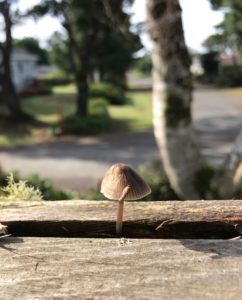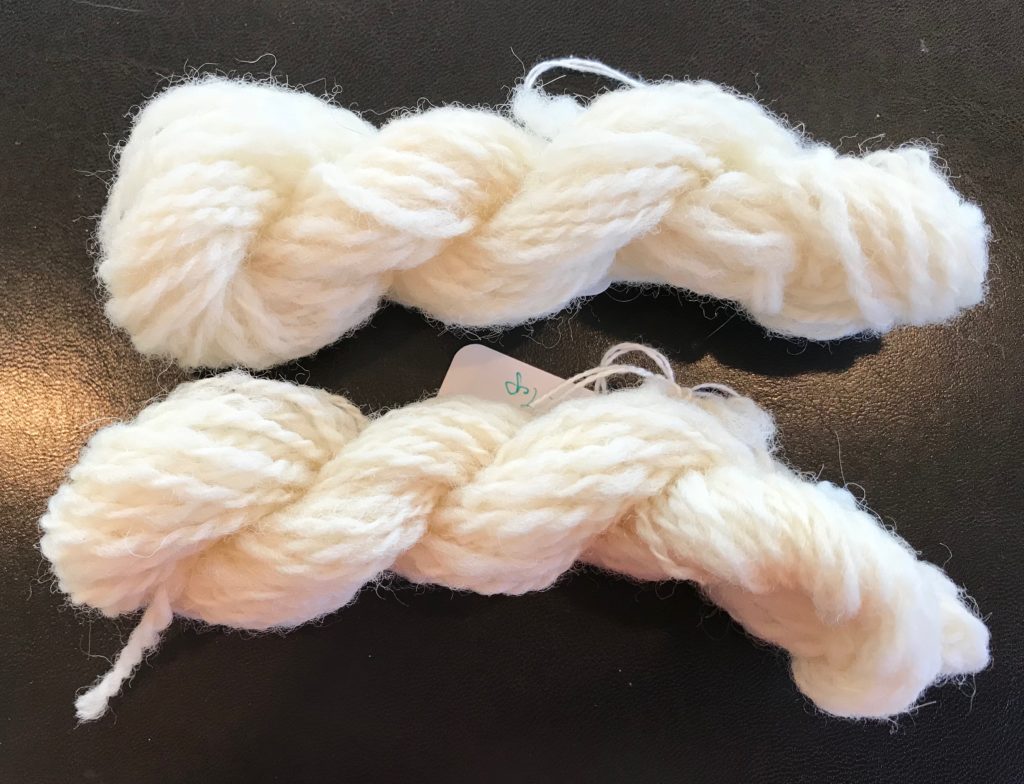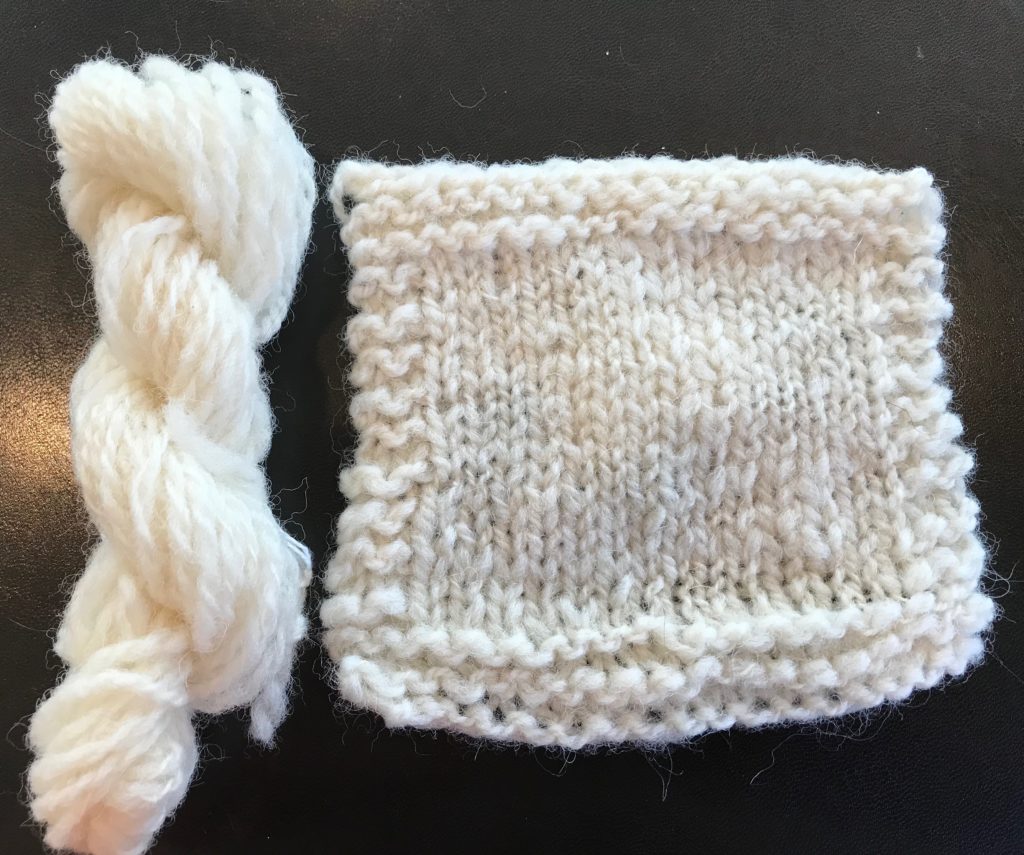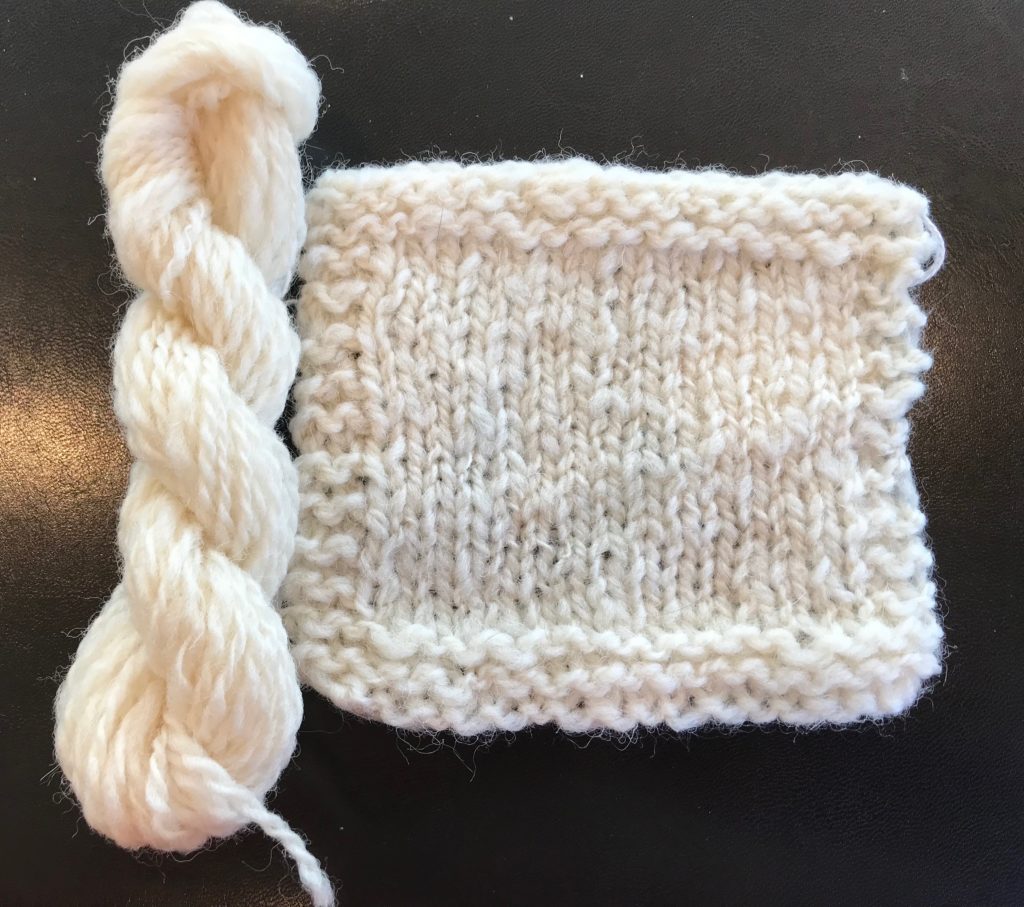First of all, there is a tiny mushroom growing on my deck. A. Tiny. Mushroom.

I grew up in New Mexico. I’ve lived in the Pacific NW for more than 7 years, but this whole idea that things will just sprout up wherever they feel like it is still totally fascinating to me. I did wonder if I cold dye some yarn with it. So, it all comes back around…
I’m plugging along on my 8oz Targhee Braid from Willamette Valley Yarn Company…it’s only three colors, and I FINALLY got through the solid half of the braid…I’m doing a fractal spin, so I’m now on to the little strips from the second half of the braid. 8oz may actually exceed my attention span. Good thing I have other things to play with too!
(Want to know more about fractal spinning? Try this.)
Whitefaced Woodland
My breed study yarn this time is Whitefaced Woodland. It’s a medium wool, a lovely cream color, and the staple length for this sample was about 6 inches. As usual, I spun half straight from the top using a short forward draw for a semi-worsted yarn. I combed the other half on the blending board, made some rolags, and spun it long draw for a semi-woolen yarn.
The bizarre thing? When all was said and done, I had to look pretty closely at both the yarn and the knitted swatches to be able to tell which was which. In good light.

Whitefaced Woodland drafted like a dream from the rolags. It was smooth, crimpy enough to grip, and allowed me to really focus on my long draw technique instead of fighting with the fiber. I spun the first half ounce quite quickly this way, and I’m beginning to see why people like this method when they want to go fast. I was still conservative with my ratio (6:1 with LOTS of treadling) but the result was a yarn I liked very much. My consistency was better too…mostly.

This fiber was also very pleasant to spin in my usual short forward draw. All in all – very nice.

There is a difference between the woolen-spun and the worsted-spun yarns, but it’s not nearly as pronounced as it has been in some of my other samples. In good light the color is different because of the density of the yarn – the worsted-spun is creamier and the woolen-spun is whiter. The same is true of the swatches. The worsted-spun swatch also feels denser, as does the small skein of yarn, which is how it should feel. I was very pleased with how both of the swatches knitted up, and I don’t believe that the woolen-spun swatch would pill particularly quickly. Overall, I think that this fiber would be great for socks, a sweater worn over a shirt, mittens, or possibly a hat. It seems like a good, sturdy fiber. I would spin it again.
